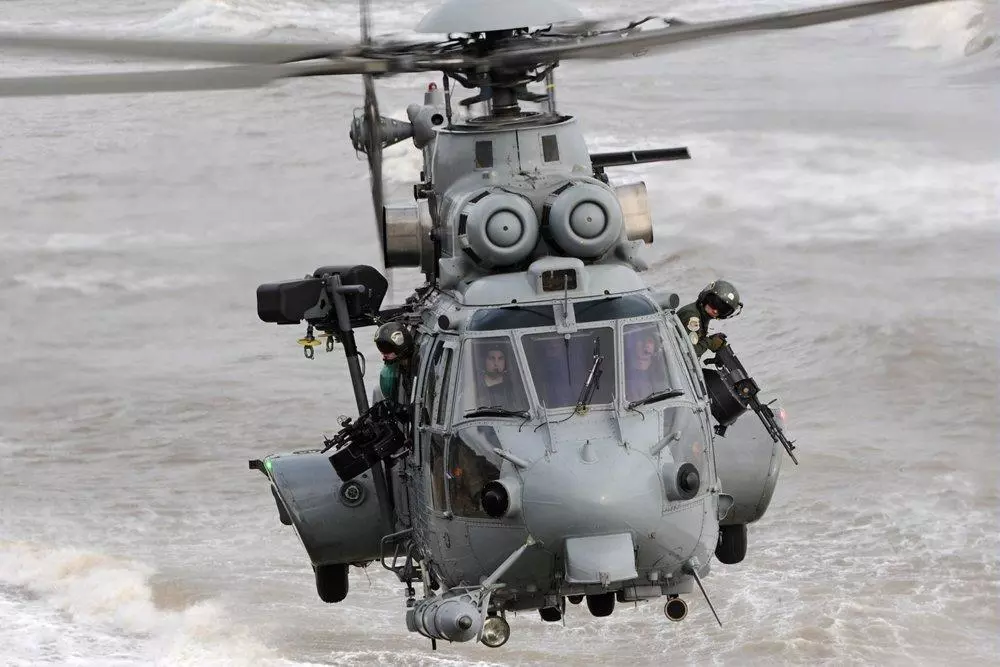
SHAH ALAM: RMAF is finally adding weapons capability to its fleet of Airbus EC 725AP (H225M) helicopters. The Defence Ministry on January 13 2022 issued a bid for tender for the purchase of 7.62mm machine guns for the EC 725 helicopters based at the Kuantan (No 10 Skuadron) and Labuan (No 5 Skuadron) airbases.
The tender notice:
PEROLEHAN PERSENJATAAN EC 725 DI PANGKALAN UDARA
KUANTAN DAN PANGKALAN UDARA LABUAN
The public portion of the requirements stated that five units are being sought though I admit I am not sure whether this means one gun and mounting system or two guns per mounting system though it most likely meant the former – one gun per mounting system.
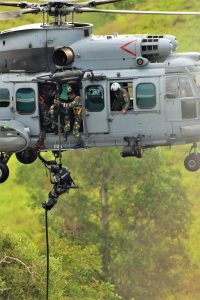
It is interesting to note that the ministry saw fit to seek bids for the purchase as Airbus has only certified the FN 7.62mm MAG with the light pintle system for use on the EC725/H225M or the FN M3M like those used on the Super Lynx, AW139 and NH90 helicopters. Buying direct from the FN Herstal would probably allow us to buy an extra gun with its mounting system.
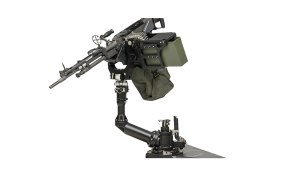
From FN Herstal:
The FN® Light Pintle System is ideal for light aircraft and provides effective suppressive fire against light ground targets. It features a 7.62mm FN MAG® machine gun and can be window, door, ramp or externally mounted. When installed on the FN® LDP Turning, the FN® Light Pintle System, can be quickly retracted when not in use.
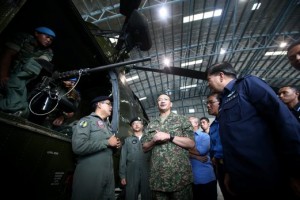
It must be noted that previously, Defence Minister DS Hishammudin Hussein had sought to arm the EC725s with guns following the Lahad Datu incursion (see above). They were supposed to be armed with the 7.62mm miniguns but in the end it was never done as the EC725s were never certified for the type.
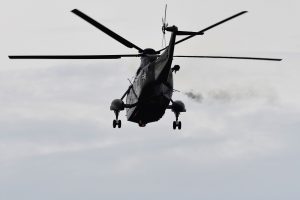
Nuri helicopters that were based in Labuan or Kuching were instead armed with 12.7mm machine guns. The armed Nuri were retired in 2019 when RMAF decided to end the service of the whole fleet.
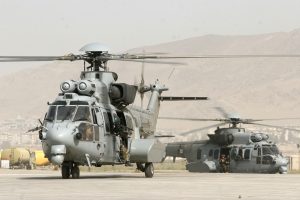
— Malaysian Defence
If you like this post, buy me an espresso. Paypal Payment

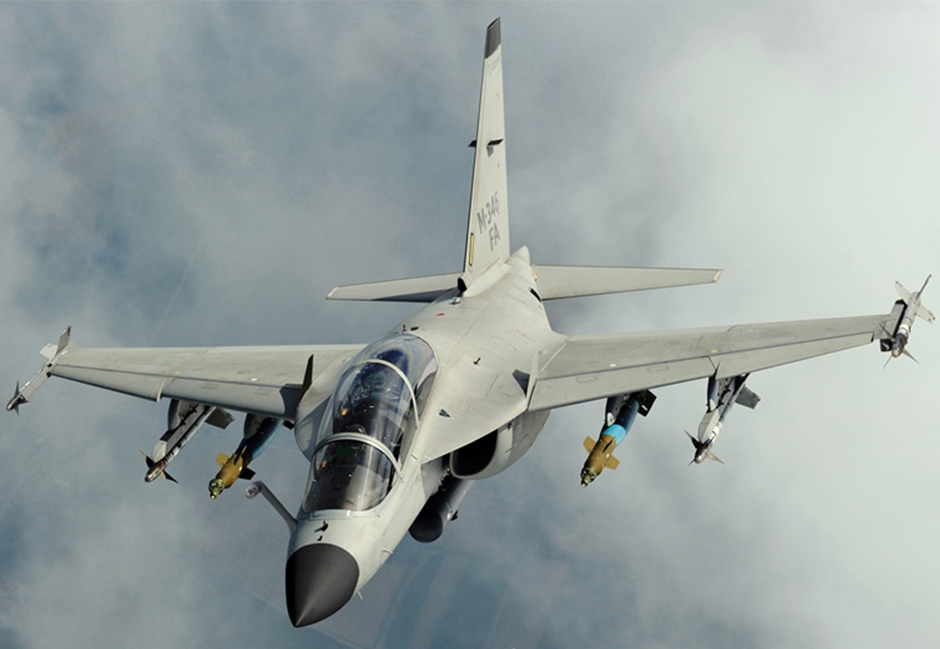
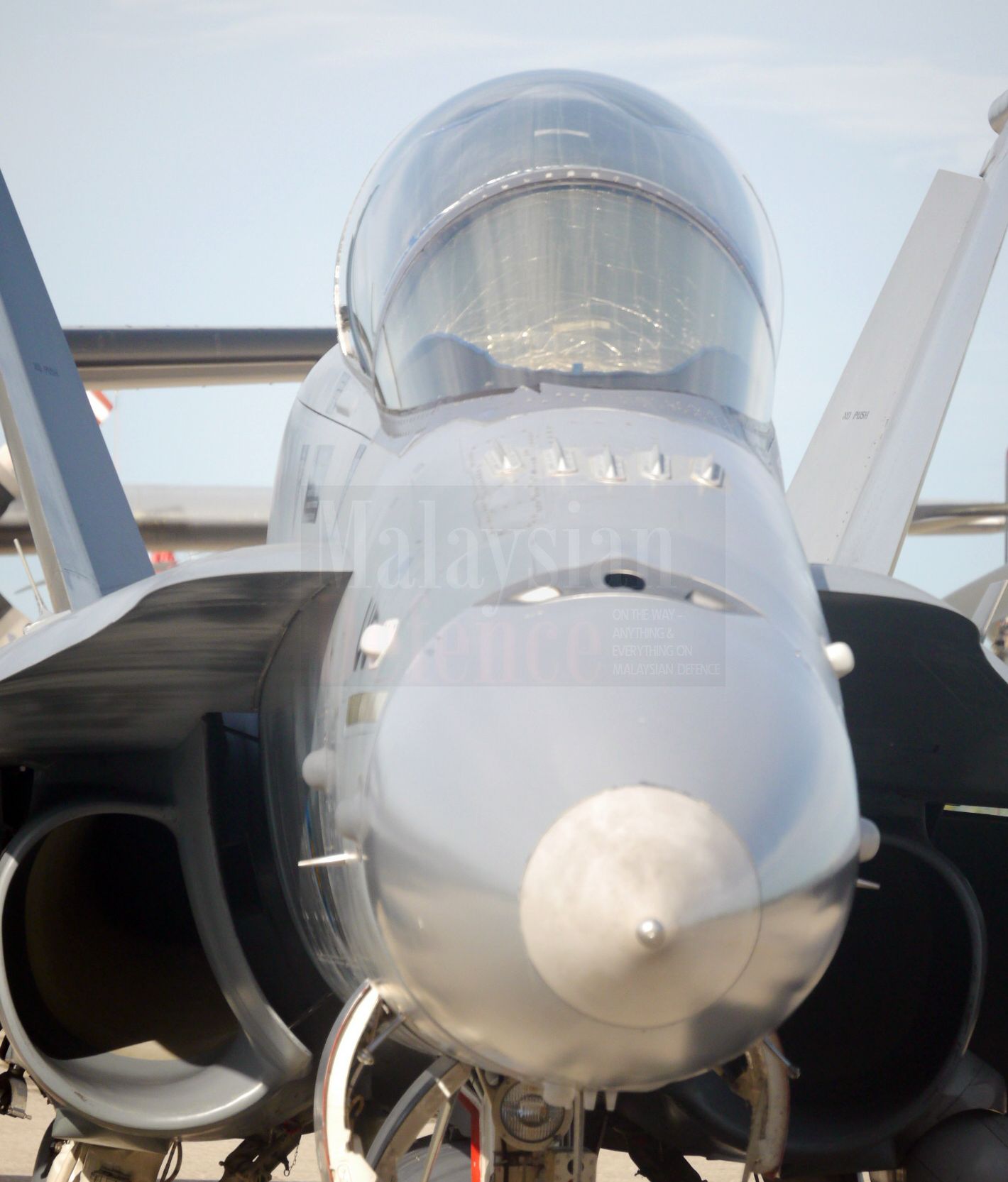
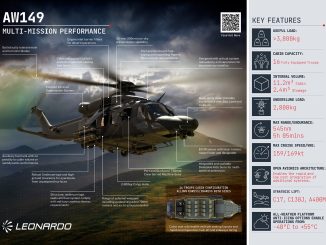
I prefer FN M3M.
No idea
Yes but then the number of people carried on board is reduced. And usually helicopters armed with the M3M is used as a gunship unlike the twin MAG carrying helicopters
too slow comparing with TNI..
They already equipped their CSAR H225M with FN MAG right n left side plus rocket pod 70mm
Not really sure then what is going on, its such a weird amount to buy, 5 gun sets for 12 choppers. They could at least get 6 sets to arm half the fleet or something. Perhaps it got hit with a budget cap? Then it would be a long wait for them to get Self-Protection Systems.
The NATO 7.62 x 51mm still a formidable round, mind you. More powerful than the AK47’s 7.62x39mm. I wonder why they can’t just jtransfer the Nuri’s 50 calibre directly. It’s just a machine gun and should not affected the aerodynamic of the 725.
Well, they to need to put the M3M mounting on it. It will become a gunship only as it will be difficult to carry people for fast rope and even hoisting. That’s why Airbus made sure that there are two-gun emplacements in front of the cabin just behind the pilot’s cabin so the helicopter can protect itself in a CSAR situation. This will allow the rear cabin to carry the SOF troops to do the extraction, four-to-six-man team together with two quartermasters to control the extraction and exfil process, either using fast rope or hoist.
Perhaps they are getting the SPS so the budget for the guns is reduced. Personally, I think they should get two sets of guns, two for each squadron, really. Anyhow, with six aircraft in each squadron, only one helicopter could realistically be used for such armed mission.
We paid USD 650 million, and we did not even get all the items that should constitute a CSAR EC725?
Just look at Thai EC725, from day 1 was fitted with
1. additional pilot door armor
2. Missile warning sensors
3. FN MAG mountings on both sides
4. Chaff/flare launchers on the tail
Day 1 for the second and third batches. The first batch was same like ours but likely been upgraded. As for RMAF ones, the SPS and fuel probes were fitted for but not equipped with. That’s what you got when you buy through a local marketing agent. And this is repeated in the tender for the guns…
Off topic, but I have asked this maybe in around about way before:
-Is the Army requesting for more MRLS especially the Astros 2 MK 6?
-Are the current Astros we have capable of firing GPS guided missiles, or can they be upgraded?
– or there is no need for GPS because the Astros uses cluster munitions so pinpoint accuracy is not that big an issues.
Any insights anyone?
Wong – “We paid USD 650 million, and we did not even get all the items that should constitute a CSAR EC725?”
Yes but we did not buy them primarily for the CSAR role… We bought them as general utility platforms to augment and eventually replace the Nuri fleet.
The platforms which were intended to be CSAR platforms were the batch of CSAR configured NH nineties we were seriously considering about a year before the Genting crash which changed things. The idea was that the RMAF would hand over the utility role the army and focus on CSAR/SAR and SF insertion.
The obstacle in addition to funding was that the army wasnt ready and took longer than expected to operate its Nuris because of manpower and infrastructure issues; a situation which still exists and is an obstacle to any induction of new assets in numbers. Easy to discuss the army getting surplus Cougars or Blackhawks [like previous suggestions that Gerak Khas can be easily expanded] and saying airframes are inexpensive and readily available but trained manpower and available infrastructure is a major issue.
Tom Tom,
– The army has a requirement for another regiment’s worth of MLRSs; just like it has a requirement for another regiment of MBTS but it’s something which has not yet been approved for funding.
– No we don not have any GPS guided rounds. As it stands no ASTROS user has GPS guided rounds; at last not in wide service. It’s something which AVIBRAS has just completed development; belatedly.
– Rounds with cluster munitions are intended to hit targets which are soft and spread out. GPS guided rounds are precision weapons intended to hit specific targets.
– Bear in mind that it’s not just the hardware but also the ability to detect, fix and hit targets – that’s what makes HIMARS so effective in the Ukraine; not HIMARS by itself
@ tom tom
Thought the Astros manufacturers had gone belly up?
Saturated MLRS had a long shelf lives so I would assume adding another pin point MLRS system while still keeping the Astros around would be a cost effective solution.
Zaft – ”Saturated MLRS had a long shelf lives so I would assume adding another pin point MLRS system”
?? Whether it’s a HE, cluster or ‘smart’ round all tend to have roughly the same shelf lives which can vary depending on storage conditions…
zaft – ”the Astros around would be a cost effective solution.”
Nonsense. Different rounds for different targets. Nothing to do with any ” cost effective solution” …
Trained manpower can be tackled with sustained focus on getting more and better quality intakes. Even if we sustain the current passing rate, in 5-10 years we could still have a lot of young pilots with wings.
https://www.malaysiandefence.com/younger-pilots-for-maf/
The MAF main shortage and key issue is resources mainly not enough money actually. And that leads to a whole host of other issues relating to manpower, equipment, maintenance, availability, job prospects, etc.
”Trained manpower can be tackled with sustained focus on getting more and better quality intakes.”
In the first place one must have a certain quantity or mass. It’s not as if large numbers of people are joining the MAF annually. Manpower is an issue; a major one and the MAF is not only an all volunteer force with a manpower cap but one which isn’t large to begin with. As for ”better quality”; we have what we have and have to work with that. Even in the army many units are not up to authorised manpower levels and units such as Paskal and Gerak Khas can’t expand as doing so mean lowering standards. Same with other all volunteers small/medium sized armies – ever wondered why the SAS’s strength hasn’t changed much in decades? Because the unit refuses to lower standards. It would rather maintain a certain quality and remain small.
”Even if we sustain the current passing rate, in 5-10 years we could still have a lot of young pilots with wings.”
No… We simply do not induct large numbers of cadet pilots annually and bear in mind only a fraction of those inducted make it past FTC 3. Then there’s the issue that some may later be found unsuitable. The current passing rate enables us to sustain a force structure slightly larger than we we presently have; nothing more.
“Manpower is an issue”
And yet we have substantial unemployment rate and youth social problems. The fact is, and I repeat this again, the MAF are seen as an employer of last resorts and often only gets candidates from those who couldn’t cut into the private sector or even as the lowest civil servant. Many youths would rather waste their life and potential being Grab or Food Panda riders than having a stable future as a soldier. The US Forces have the same problem post Vietnam War, and it took them a lot of effort, time & money to change the image of the Armed Forces plus a huge incentive for a regular grunt to come out as a college grad for free. That in turn made it a viable employer of choice for many US youths especially whose from poorer disenfranchised communities.
Imagine if an Orang Asli kid with poor 3R skills going in and 10-15 years later coming out ready for the working world. This is what I want MAF to become.
“induct large numbers of cadet pilots annually”
We don’t have to. As I said, even with the current rate of 30 flying grads last year, if we can maintain this rate every year for the next 10 years, you’re looking at 300 capable flyers that have left the door. Whether they’ll eventually be flying or not is another story. The point is we have to continue pumping them out.
” The fact is, and I repeat this again, the MAF are seen as an employer of last resorts and often only gets candidates from those”
I’ll repeat this again that things have improved with regards the MAF being seen as a last resort means of employment; quality has improved dropped in the 1990’s] but we can only work with what we have based on the education system we have. The fact also remains there is a cap on how many people can be inducted; numbers are not large and the MAF is not a large entity to begin with.
”As I said, even with the current rate of 30 flying grads last year”
That enables pilots to be retained longer but it doesn’t change the fact that only a fraction of the numbers inducted annually make it past FTC 3 and even then some might leave prematurely or be found unsuitable for fast jets.
”This is what I want MAF to become.”
That’s great but I will only comment on what I know and hear directly from service or industry people with regards to manpower issues which are due to inherent issues for which there is no fast solution. The past decade or so the MAF has made efforts to improve its quality of manpower; a few years ago a decision was made for all Lts. without a degree to leave the service. I met one such person. We could have put them through a degree programme instead of losing them.
”The point is we have to continue pumping them out.”
”The point is” that what we ”pump out” will be sufficient for the force structure as planned in the CAP 55 but nothing beyond that.
”Many youths would rather waste their life and potential being Grab or Food Panda riders than having a stable future as a soldier”
AS explained various times here over the years history plays a part. The MAF is not a national institution the way the TNI, RTA or even the SAF is. It’s not part of the social fabric and national psyche they way other militaries are and this plays a part in how its perceived.
” often only gets candidates from those who couldn’t cut into the private sector or even as the lowest civil servant.”
Sure about this? That’s quite a blanket claim to make. I’ve personally met numerous people over the years who chose a career in the MAF who could ‘cut into the private sector ‘ but chose not to.
I can only speak for those that I know and I worked with and their stories are pretty the same, many went in because they wouldn’t have past muster tertiary education and after 22 years of service, those that weren’t high ranked officers who became managers, are now working as foremen, drivers & supervisors. Despite that, their POV on the younger generation recruits are even worse! But I can fully understand why; who would risk their lives just for a job when a gig at your own free time can pay you better and even if they are willing to do that, they rather join the police. This was told to me by the many youths who left my organisation for a civil service/police career, none consider the MAF.
Instead of clumping things together we have to look at the specifics. Not everyone [including someone I grew up with and became the MCM Squadron CO] joins because they “couldn’t cut into the private sector or even as the lowest civil servant” [to quote you] – it varies and such a blanket claim can be seen as an insult to some. I know several who could make the “cut into the private sector or even as the lowest civil servant” but instead chose the MAF. I know several who left the MAF and make the
“cut into the private sector” rising
to high positions.
As to the general reasons why anyone would join the MAF; times have changed. We also have to take note that the reasons for joining would also depend on the decade – the sixties? Seventies? Nineties or present? Economic, social and factors are driving reasons. Another thing to factor is compared to the past more from urban backgrounds are joining.
So I guess its down to our different perspective coming from interaction with different levels of the MAF. I respect that you dealt with the rank & file but I deal more with the ex grunts and these are base levels that majority gets into the MAF. While the officer level quality might not have changed much due to certain qualification entry requirements, there are no such things for grunt level, and the stories I heard about the newcomers can be harrowing and saddening to the future of MAF.